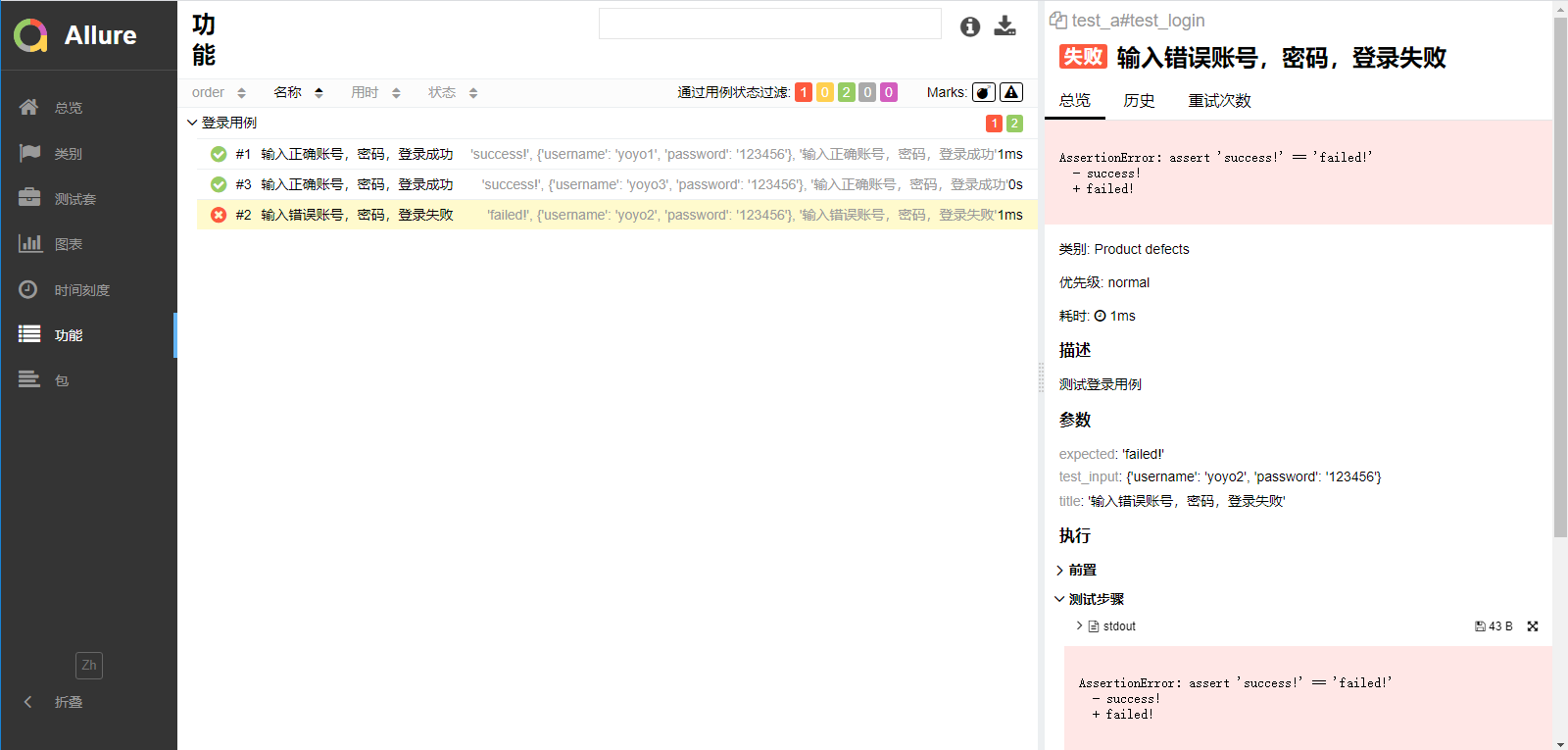第一种方式:ids
1.参数化(pytest.mark.parametrize)
# test_a.py import pytest import allure def login(username, password): '''登录''' print("输入账号:%s" % username) print("输入密码:%s" % password) # 返回 return {"code": 0, "msg": "success!"} # 测试数据 test_datas = [ ({"username": "yoyo1", "password": "123456"}, "success!"), ({"username": "yoyo2", "password": "123456"}, "failed!"), ({"username": "yoyo3", "password": "123456"}, "success!"), ] @allure.story("登录用例") @pytest.mark.parametrize("test_input,expected", test_datas ) def test_login(test_input, expected): '''测试登录用例''' # 获取函数返回结果 result = login(test_input["username"], test_input["password"]) # 断言 assert result["msg"] == expected
运行用例
> pytest --alluredir ./report test_a.py
> allure serve ./report

这样生成的报告在用例列表里面并不能很友好的展示出每个用例的执行场景,只知道哪个用例报错了。
于是需要对每个用例加上描述,加一个 ids 参数
2.ids参数使用
在用例部分代码里面加个 ids 参数,用于描述每个用例的运行场景。
@allure.story("登录用例")
@pytest.mark.parametrize("test_input,expected",
test_datas,
ids=[
"输入正确账号,密码,登录成功",
"输入错误账号,密码,登录失败",
"输入正确账号,密码,登录成功",
]
)
def test_login(test_input, expected):
'''测试登录用例'''
# 获取函数返回结果
result = login(test_input["username"], test_input["password"])
# 断言
assert result["msg"] == expected

第二种方式:allure.title
@allure.title("用例描述,测试输入:{test_input}")
在 allure_pytest/utils.py 源码里面可以找到对应的代码
# allure_pytest/utils.py def allure_name(item, parameters): name = escape_name(item.name) title = allure_title(item) return title.format(**parameters) if title else name
当没有加allure.title()时候,用例的描述就是 item.name 值(也就是上面的 ids 用例的名称),
如果加了allure.title(),那么用例的描述就是添加的title值,这两个地方取其中的一个。
重点来了:把用例描述当成参数传给测试用例
import pytest import allure # 作者:上海-悠悠 QQ交流群:779429633 def login(username, password): '''登录''' print("输入账号:%s" % username) print("输入密码:%s" % password) # 返回 return {"code": 0, "msg": "success!"} # 测试数据 test_datas = [ ({"username": "yoyo1", "password": "123456"}, "success!", "输入正确账号,密码,登录成功"), ({"username": "yoyo2", "password": "123456"}, "failed!", "输入错误账号,密码,登录失败"), ({"username": "yoyo3", "password": "123456"}, "success!", "输入正确账号,密码,登录成功"), ] @allure.story("登录用例") @allure.title("{title}") @pytest.mark.parametrize("test_input,expected,title", test_datas ) def test_login(test_input, expected, title): '''测试登录用例''' # 获取函数返回结果 result = login(test_input["username"], test_input["password"]) # 断言 assert result["msg"] == expected
